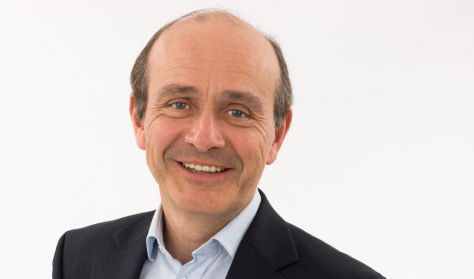
Haydn–Mozart – 2
Program:
Joseph Haydn: Symphony No. 59 in A major (“Fire”), Hob. I:59
Wolfgang Amadeus Mozart: Violin Concerto No. 5 in A major, K. 219
Joseph Haydn: Symphony No. 99 in E-flat major, Hob. I:99

Program:
Joseph Haydn: Symphony No. 59 in A major (“Fire”), Hob. I:59
Wolfgang Amadeus Mozart: Violin Concerto No. 5 in A major, K. 219
Joseph Haydn: Symphony No. 99 in E-flat major, Hob. I:99
Ön egy múltbeli eseményre keresett rá. Kérjük, válogasson aktuális kínálatunkból a Jegy.hu keresőjében!
Last event date: Sunday, April 10 2022 3:30PM
Haydn–Mozart – 2
Could we ever get tired of the warmth-exuding music of Haydn and Mozart, the energetic way in which Gábor Takács-Nagy conducts the orchestra, or the sound of Ilya Gringolts’s Stradivarius? Those who have already heard the Viennese classicism specialist conduct, or just talk about, the music of the two Austrian masters will know that his series with the Festival Orchestra can only be described by words like freshness, dynamism, sparkle, surprise and creativity. This concert will be framed by a rather fiery Haydn symphony and another one paying tribute to a deceased friend. Between the two, one of the most popular violin concertos, Mozart’s virtuoso piece will be performed with the solo of Ilya Gringolts, a former student of Itzhak Perlman and the first violinist of the Gringolts Quartet, who plays the instrument called the “Kiesewetter”.
As opposed to his own traditions, instead of a slow introduction, Haydn’s Symphony No. 59 immediately starts with the main part exploding like fireworks, and that in itself would be enough for it to earn the nickname “Fire”. However, the piece written in 1769 was nicknamed after a specific event long after it had been composed, in the middle of the 1770s. It was performed in the Esterházy Court during the interval of Gustav Friedrich Wilhelm Grossman’s play, The Fire, and that was when it received its name. In any event, the title of the theatrical symphony, a typical piece of the Sturm und Drang movement with its wild passages, astonishing shifts in dynamics and unusual diversions into different keys is rather befitting.
Mozart, having gradually explored the boundaries and technical limits of the violin concerto bade farewell to the genre when he completed his fifth, just shy of his 20th birthday. In addition to the orchestral apparatus and the key, the operatic character also connects the piece to Haydn’s Fire Symphony: here the solo violin behaves like a prima donna when in the first movement instead of blending in with the material prepared by the orchestra, it immediately grabs the opportunity for an aria-like introduction for six bars. In the slow movement, we can hear one of the most beautiful singing melodies of Mozart. Also known as “Turkish,” the concerto ends with a finale that truly does evoke Turkish, or perhaps even Verbunkos or other Hungarian motifs.
After the intermission, the BFO will be joined by timpani as well as a sizable wind section, necessary to perform Haydn’s Symphony No. 99. Clarinets are also prescribed, which provide the whole work with an unusual layer of mellowness. For the composer, accustomed to private concerts in royal courts, England’s capital and the paid concerts performed for the public were a tremendous experience. He composed this piece in 1793 for his second hugely successful tour in London. The overture with some complicated key changes is followed by a painful slow movement paying tribute to Haydn’s friend, Marianne von Genzinger, who had passed away not much earlier. After a traditional minuet, the symphony concludes with a lively rondo.
Those attending the early music concert of the BFO’s ensemble playing historical instruments will be able to enjoy an extraordinary father and son event. There will be an abundance of talented members of the Bach family in the program.
Life-Oeuvre-Pinnacle
Jörg Widmann is a musical polymath par excellence. He is not only one of the greatest living masters of his…
Intoxicating Baroque Vivaldi - Pergolesi - Boccherini - Galuppi - Mozart - Jommelli - Binon - Malov - T’Hooft
item(s) in basket
total:
Time limit has expired. Please, put item(s) in to basket again.